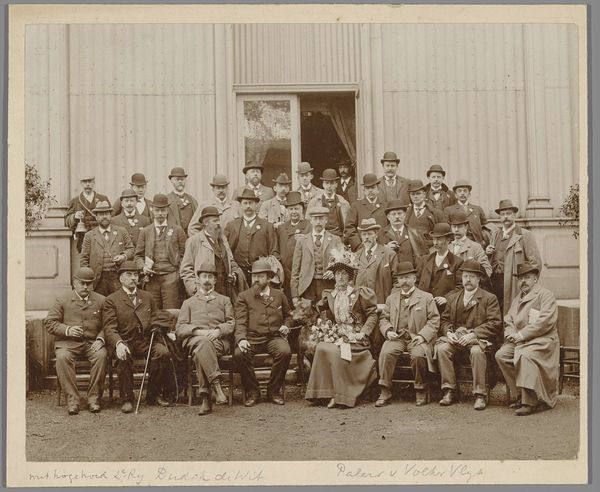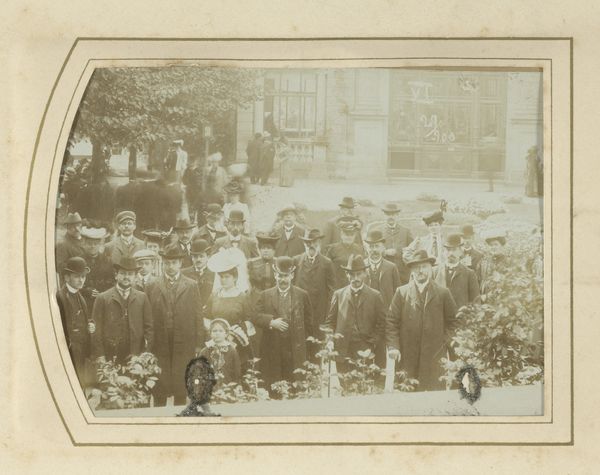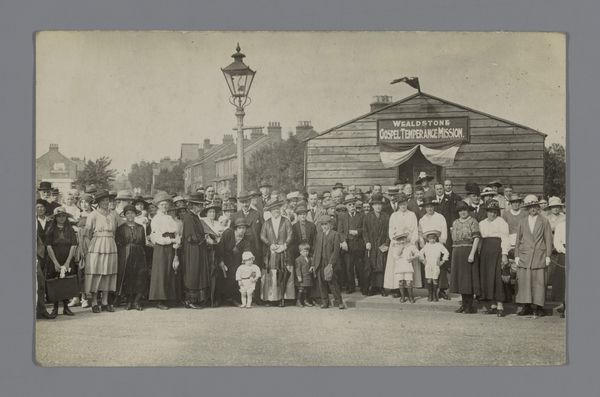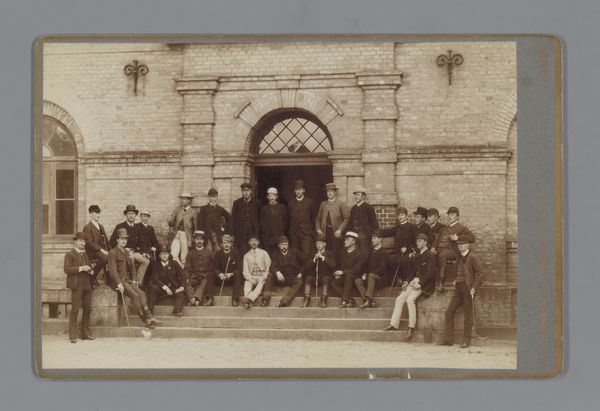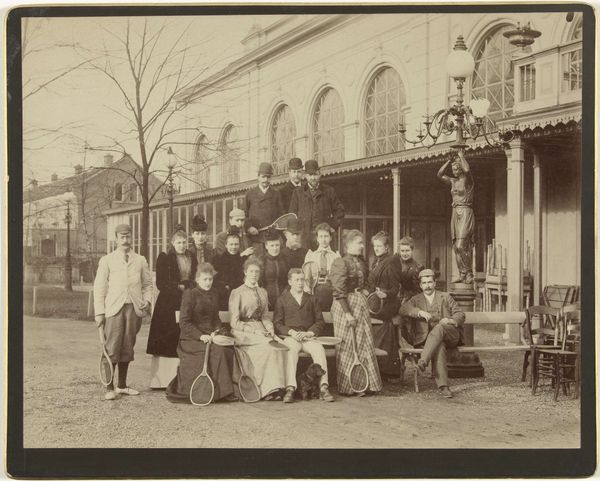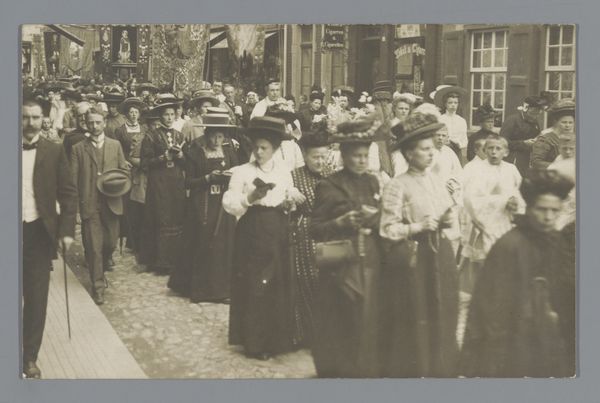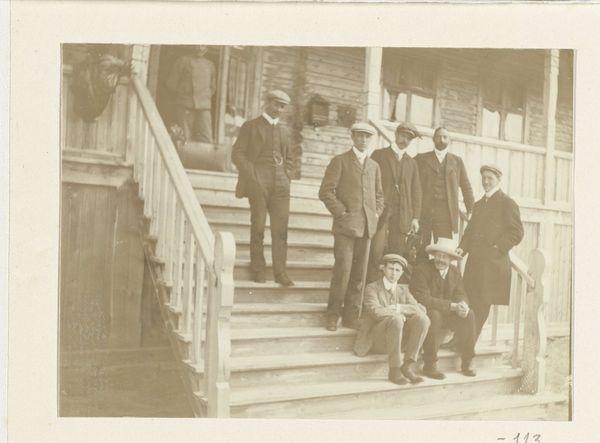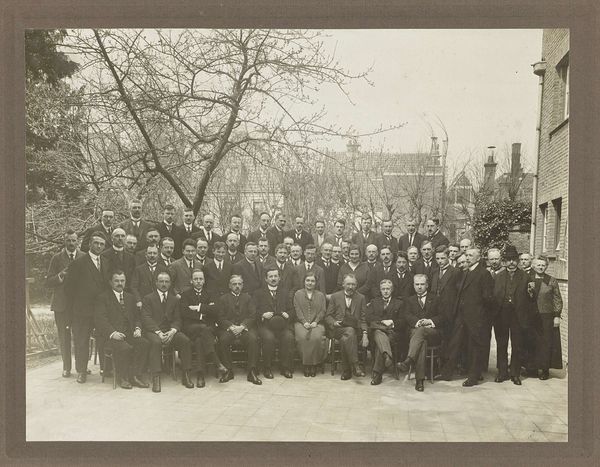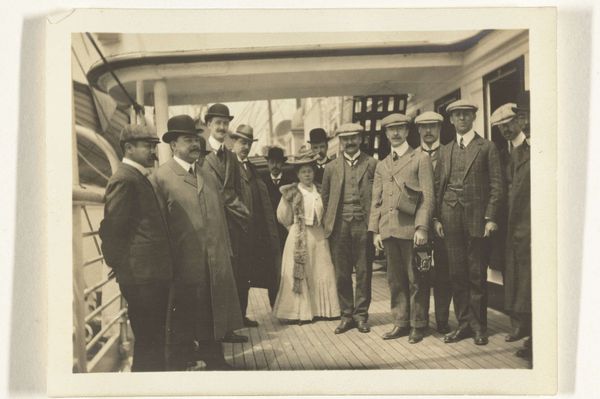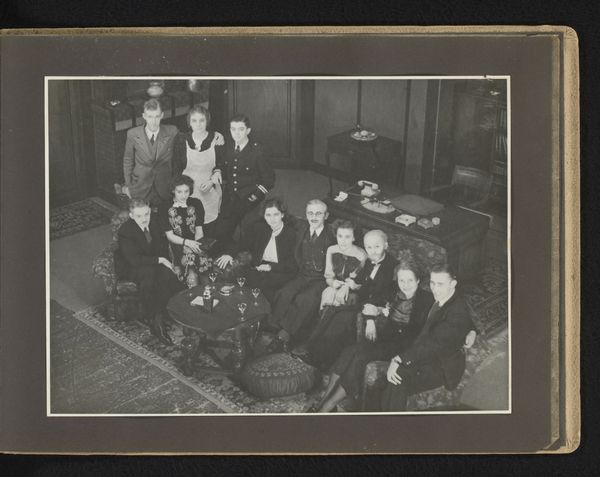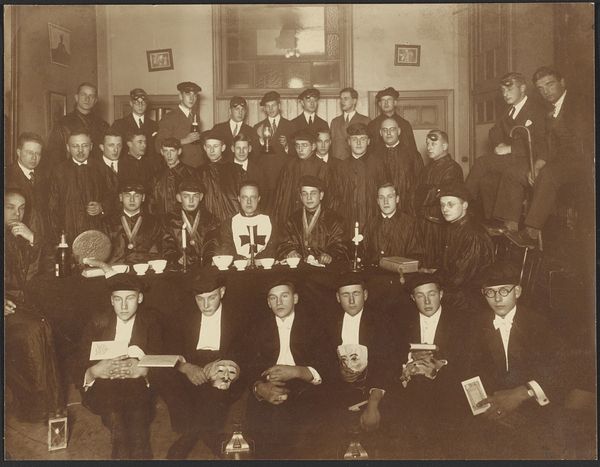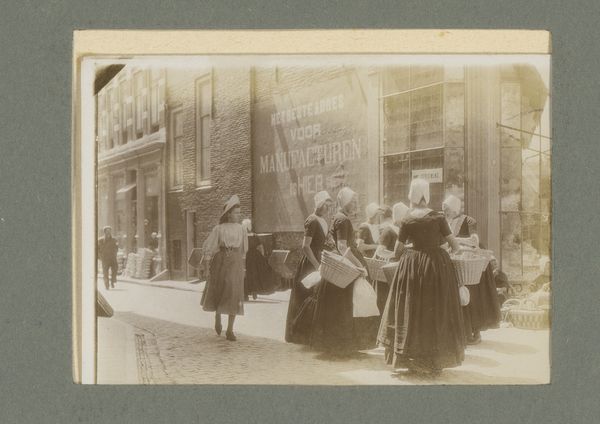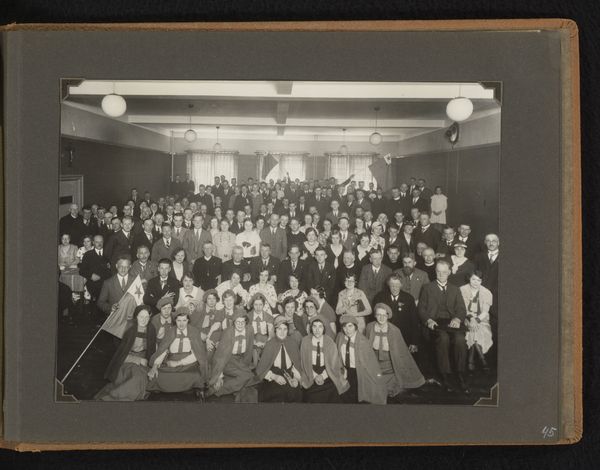
Groepsportret van personeel van parapluiefrabriek 'Gelria' met directeur Arthur Schnitzler en zijn echtgenote t.g.v. het 40-jarig jubileum in 1928 1928
0:00
0:00
photography, gelatin-silver-print
#
portrait
#
photography
#
historical photography
#
historical fashion
#
group-portraits
#
gelatin-silver-print
#
modernism
#
realism
Dimensions: length 128 mm, width 210 mm, length 240 mm, width 320 mm
Copyright: Rijks Museum: Open Domain
Editor: This photograph, a gelatin silver print from 1928, captures the staff of the 'Gelria' umbrella factory with the director, Arthur Schnitzler, and his wife. The subjects have such grave expressions! What can we unpack from this group portrait, aside from the somber atmosphere? Curator: Let's start with the umbrellas themselves—or rather, the *absence* of them. A photograph of an umbrella factory’s staff that omits their product raises questions. How does the act of photographing them—the material conditions and the photographic process itself—become a stand-in for their labor? This image captures not the thing they make, but them as a unit of labor. Editor: So the photo becomes about the workers themselves rather than what they produce. How would that affect its meaning? Curator: It highlights their collective role in production and how photography functions within the social and economic context. These gelatin silver prints, relatively inexpensive and reproducible at the time, allowed for mass image creation. Note also the presence of the building itself. Doesn't its architectural presence dwarf the individuals? It certainly makes the raw building materials, especially brick, stand out as symbols of industrial permanence, maybe even capitalist stability, dwarfing the workers. Editor: I never thought of it that way! So, it is less about umbrellas and more about how images and industry shape lives. Curator: Precisely. This isn’t just a simple record; it is a document intertwined with the means of production and representation. The employees aren't showing their wares, but proving, in a photograph—the thing that's being consumed—that they're at their place of work. Editor: I guess seeing it as a representation of work rather than an umbrella ad changes everything! Thank you for sharing your perspective on the subject! Curator: Absolutely. Consider how labor and material culture converge in even the most seemingly straightforward images.
Comments
No comments
Be the first to comment and join the conversation on the ultimate creative platform.
